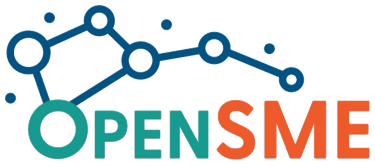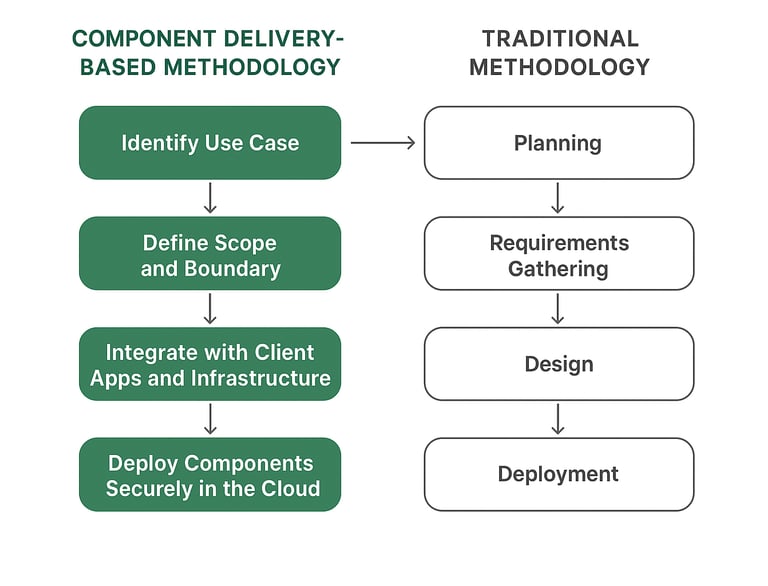
Methodology in Motion
Frameworks that Translate Insight into Action

Four-Week Component Delivery Projects: Small, Fast, and Impactful
A typical component delivery project follows a focused four-week cycle, designed for speed, precision, and measurable results. By keeping the scope concise and the objectives clear, each engagement delivers tangible business outcomes without the delays or complexity often seen in traditional projects. This approach emphasizes small bites and iterative delivery, ensuring agility, continuous feedback, and rapid value creation.
Why Four Weeks?
Four weeks strikes the right balance between depth and agility. It’s long enough to understand the business context, design and configure the component, and deploy securely — yet short enough to maintain focus and momentum. Each cycle produces a functional, usable output that can be immediately integrated and tested in the real environment.
Key Principles
Concise Scope
Each project targets a specific business use case, such as a workflow automation, analytics dashboard, or integration bridge.
By narrowing the scope, the team avoids over-engineering and focuses on solving real, high-priority challenges.
Small Bites, Iterative Delivery
Work is divided into manageable increments, allowing continuous testing, user validation, and course correction.
Each iteration builds upon the previous one, creating momentum and confidence for future enhancements.
Proven Efficiency
This compact, outcome-driven model reduces overheads and unnecessary documentation.
Decision-making is faster, integration is smoother, and the results are visible early.
Teams and clients both benefit from higher predictability and reduced risk of large-scale project failure.
Continuous Feedback Loop
Regular client touchpoints ensure alignment between business needs and technical delivery.
Adjustments can be made quickly based on real-world feedback, improving overall quality and satisfaction.


